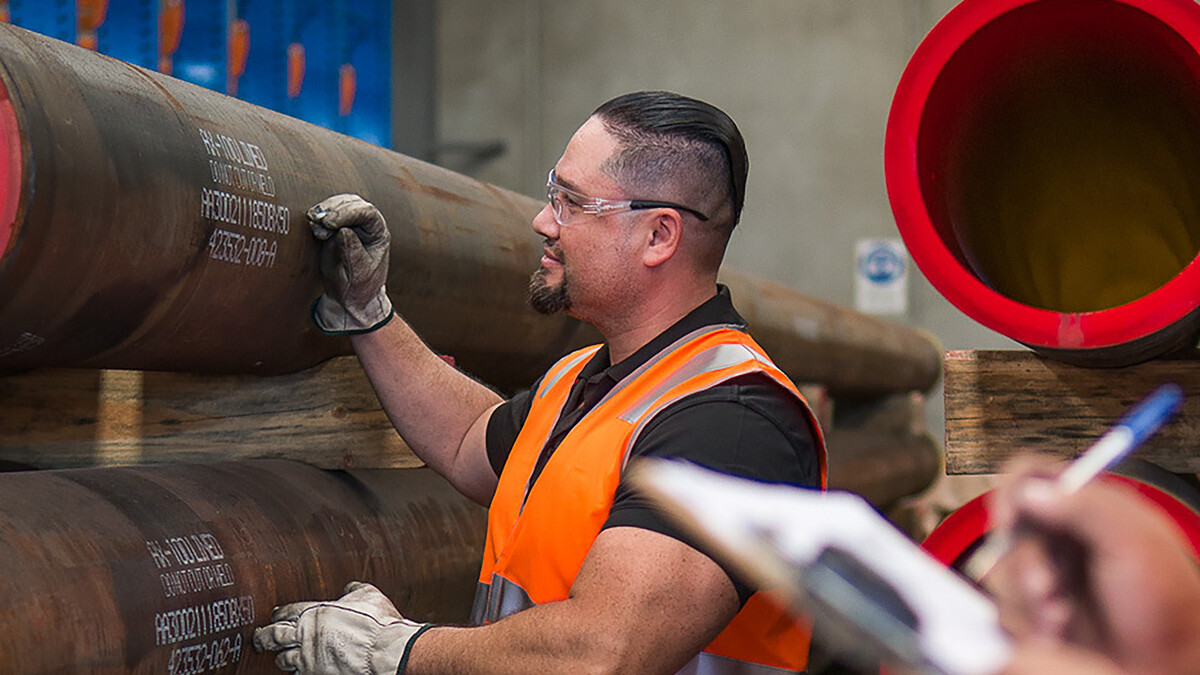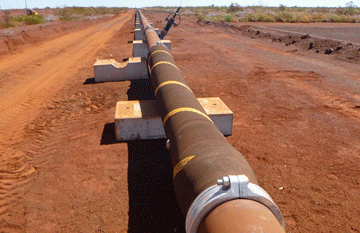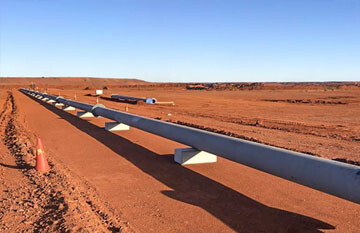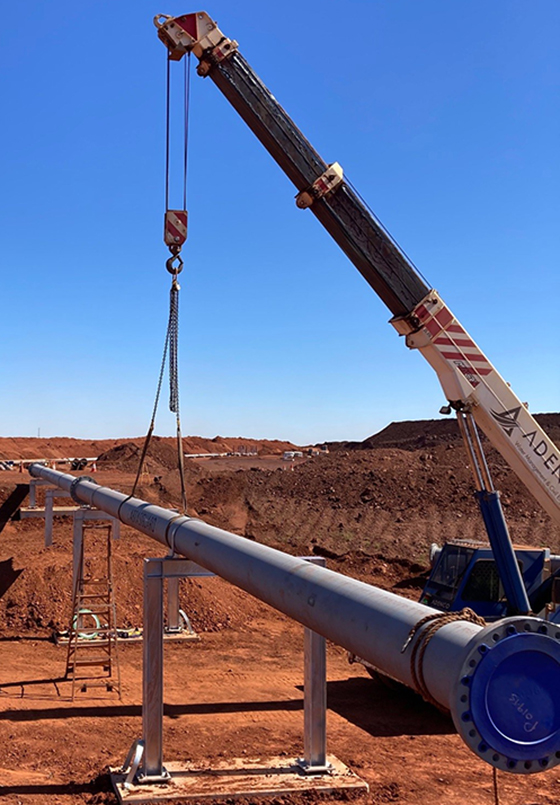
Pressure & abrasion challenges
Roy Hill’s previous tailings pipelines used HDPE-lined pipe. This worked fine for the shorter pipelines at low pressure, but the project team knew it wouldn’t be durable enough for the future requirements of their tailings network. The new pipeline needed to handle:
Highly abrasive slurry
Iron ore slurry is severely abrasive on pipes. They wanted to avoid premature failure of the piping. Because they were already using HDPE-lined pipe, they understood the wear rate and were concerned that it wouldn’t be durable enough for a longer, higher pressure pipeline.
Long distance
Longer pipelines are a large investment. To reduce the capital expense, they wanted to review all the lined pipe options available.
High pressure
Because the new pit was further away from the plant, the pipeline needed to safely handle the increased pumping demands.
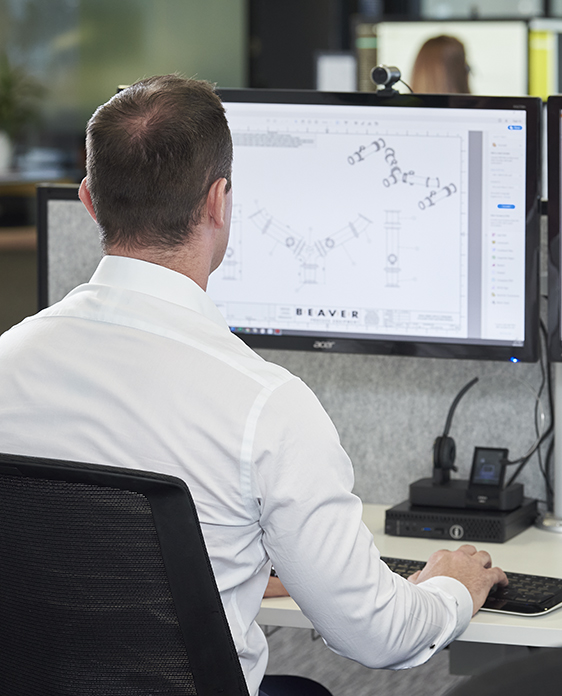
The specification review
Safety and reliability are paramount to Roy Hill. They needed a piping system that could safely handle high-pressure slurry transport and operate reliably.
We collaborated with the Roy Hill engineering team to complete a thorough spec review. Based on shared learnings from projects we’d recently completed with Rio Tinto and BHP, we reviewed their strategy and provided recommendations for their tailing storage network.
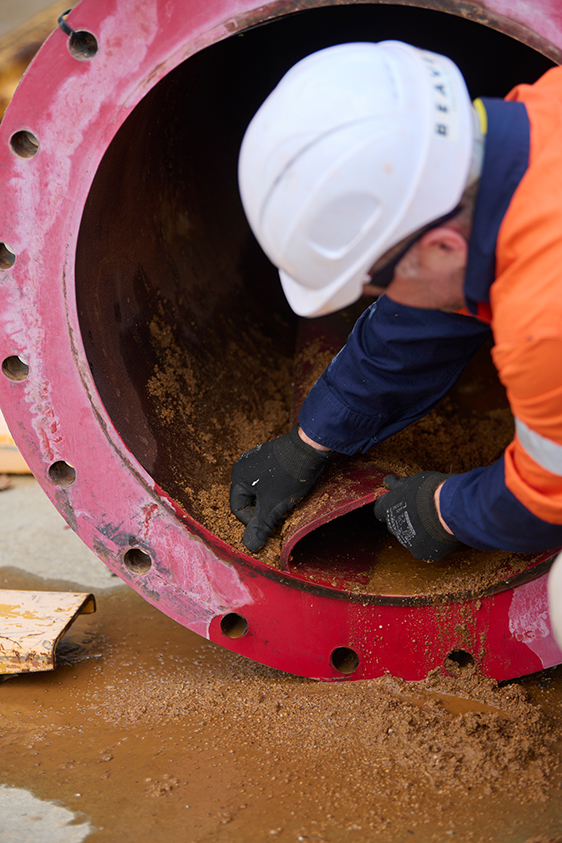
Our recommendations
1. More durable wear liner for abrasive slurry
The Zulu 6 team were concerned HDPE-lined pipe would wear prematurely. We reviewed and agreed it wouldn’t be durable enough for the high pressure, abrasive conditions. That’s because when HDPE is used in high pressure conditions, there is an increased risk that entire sections of the lining will detach and collapse. It also wears quickly in iron ore slurry applications.
The team decided polyurethane lined pipe was a better option. But not all polyurethane liners are equal. If the wrong formulation is used or the liner isn’t bonded properly, the liner delaminates from the substrate. Once the slurry leaks through to the steel pipe, it shortens the pipeline’s lifespan and causes massive maintenance problems.
That’s why we recommended Abrasiguard slurry piping. The liner is spun cast and chemically adhered to the steel substrate, so it won’t debond and peel. It has far better wear performance than HDPE due to its excellent abrasion resistance and is successfully used at other sites for low maintenance, reliable tailings transport.
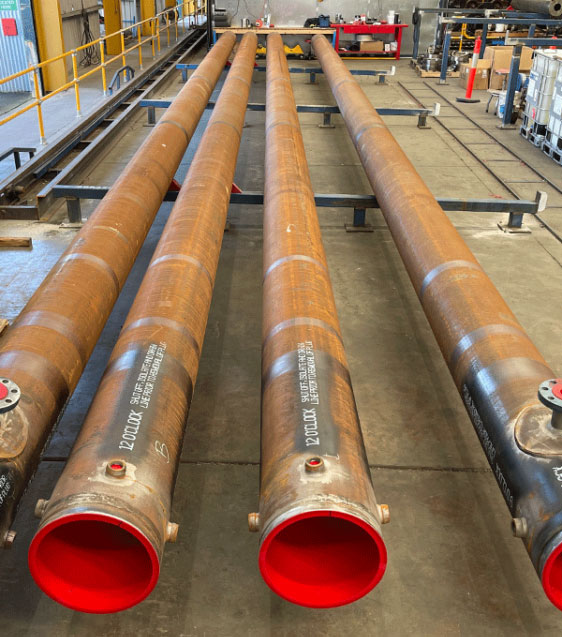
2. Longer length pipes for more efficiency
When we reviewed the spec, we could see that shorter length pipes would increase the cost of the build.
We suggested they look at 18-metre-long pipe spools, instead of 12-metre spools. This would reduce the overall pipe spool count by 30%, reduce capital costs, and lower install costs.
We’d seen 18m spools used at Rio Tinto’s RVS project, a 13km iron ore slurry pipeline, with good results.
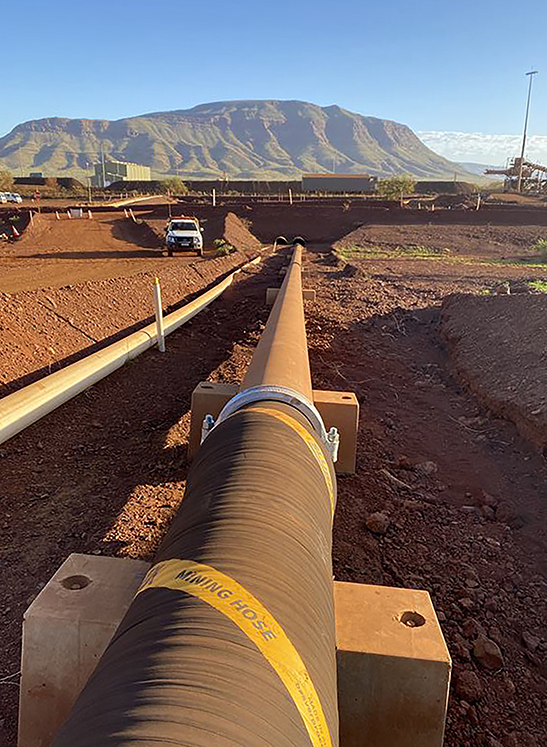
3. A mix of flexible and rigid piping
To reduce maintenance work and provide a more reliable system overall, we suggested a piping system of rigid Abrasiguard on the straight geometries, and flexible Slurryflex mining hose on the bends.
Using a system of rigid and flexible piping means they get the extended wear life of polyurethane-lined pipe, combined with the benefits of mining hose where there’s an angle or elevation change.
Mining hose has more tolerance to be stretched, compressed or flexed. This makes it easier to install. And it can absorb and dissipate impact better than a rigid steel spool—so it performs better where hard, fast slurry changes direction on bends.
The outcome
The 18-metre polymer-lined pipes have now been installed. We manufactured 190 spools—3.5km in total—at our Brisbane factory for the project.
Based on independent testing, Abrasiguard is expected to last 100x longer than HDPE in this application. It will be more economical over the life of the mine and less wasteful. And they can repurpose the pipe spools in years to come as the needs of the mine change.
As Roy Hill looks for ways to sustainably deliver high-grade iron ore, we’re proud to help them become more efficient and meet the needs of the future.
Cost improvement Lower total cost of ownership
Lifespan 100x longer than HDPE-lined pipe
Efficiency 30% less pipe spools
Peace of mind Engineered to last









